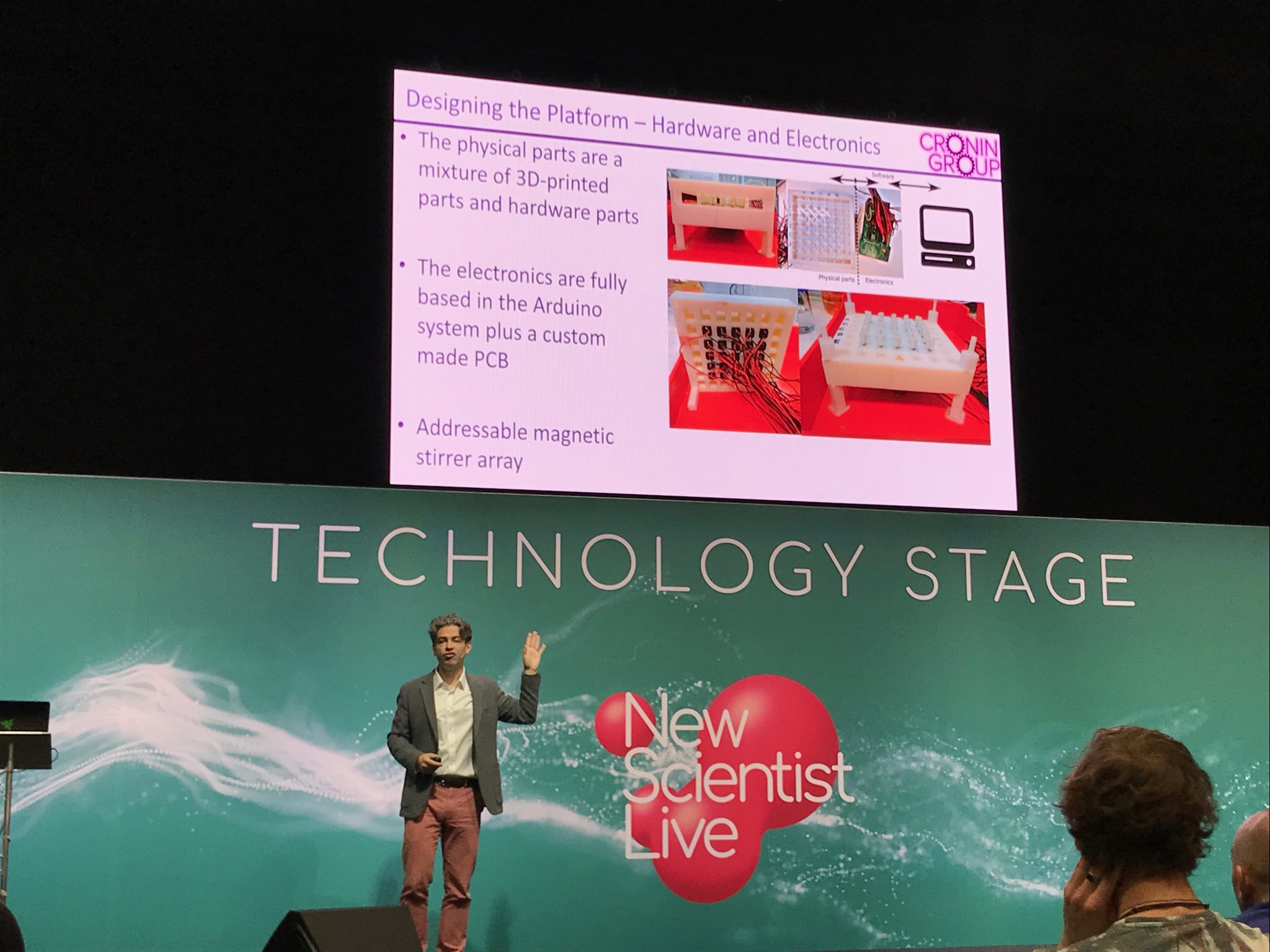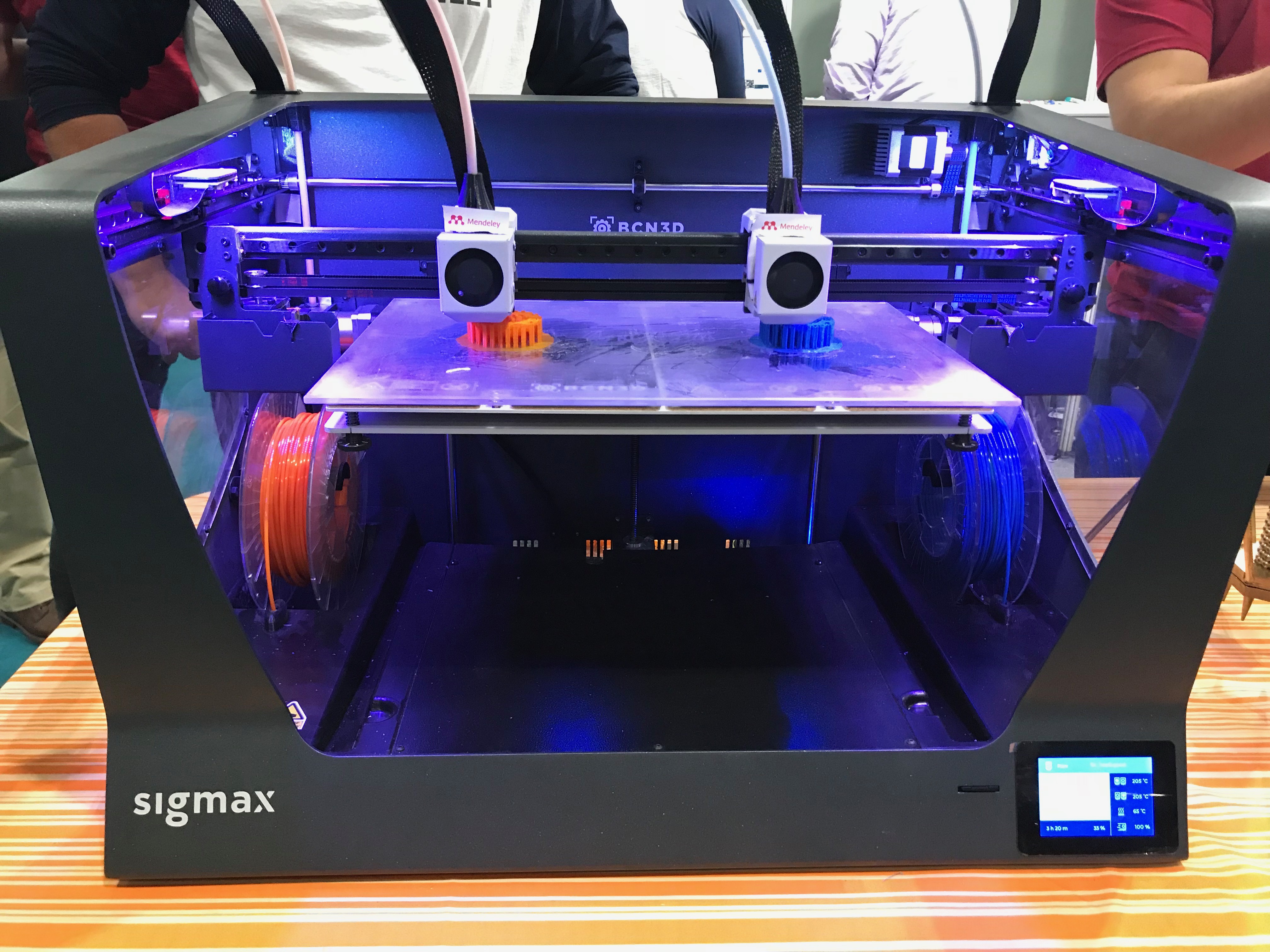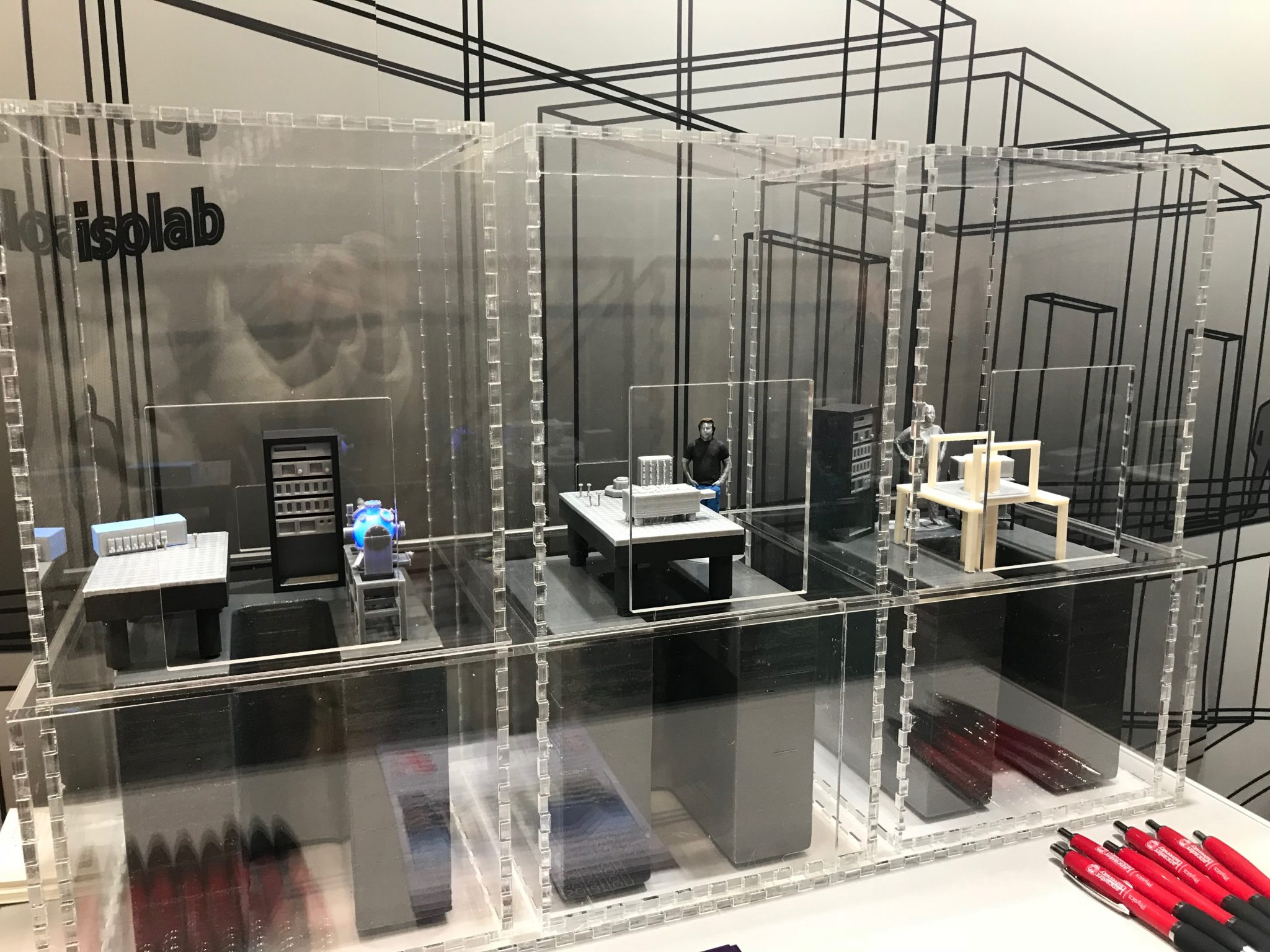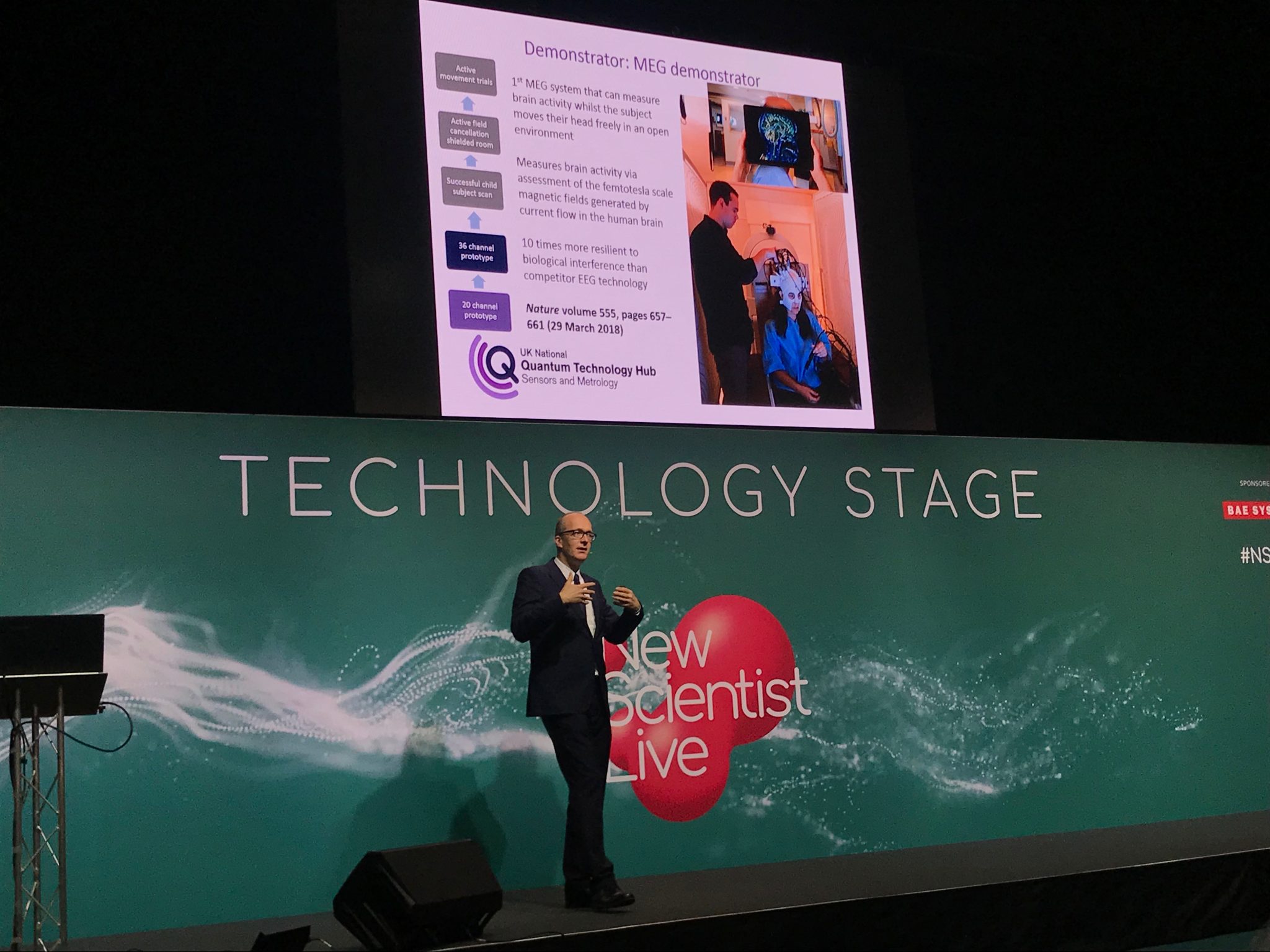3D Printing Industry attended New Scientist Live (NSL) 2018 in London last week.
As in previous years, NSL was held at ExCeL London and over 120 speakers and 100 exhibitors came together for a series of stimulating talks on new research and revolutionary discoveries combined with interactive experiences, performances and workshops.
3D printing in chemistry and healthcare
Professor Leroy “Lee” Cronin, the Regius Chair of Chemistry at the University of Glasgow, gave a talk entitled “Can we make computers with chemicals?” and described how his team is using 3D printed parts in the physical parts of their chemical computers apart from hardware parts. After the presentation I asked Professor Cronin for further details.
“We 3D print the parts because they’re easy to prototype. We need to make changes in the chemical computer,” said Prof. Cronin. “We also need to change the dimensions of the cellular array and 3D printing is the good way to do that.”
“The 3D printed parts are used as the containers for the chemical reactions, they are the holders to make the cellular array. These help us to reconfigure different shapes. Right now, we have squares. Later, we may have triangles or hexagons.”

Elsevier, an academic publishing house, brought the Sigmax BCN3D printer to print various virus models. The 3D printer was used as a marketing device to bring people to the booth and provide gifts to take away.

3D printing in quantum systems
Quantum Base, a company developing Quantum systems, spun out of Lancaster University in 2013, co-exhibited at New Scientist Live. They demonstrated many of their labs and the systems used in them with the help of 3D printed models. Quantum Base also use 3D printed parts in experiments.

Kai Bongs, the Director of the UK National Quantum Technology Hub in Sensors and Metrology, gave a talk entitled “How quantum sensors can improve our lives”. The talk described development a magnetoencephalography (MEG) system that can measure brain activity in a much less intrusive manner than other neuroimaging techniques.
In this systems the helmets are 3D printed. These helmets, plus sensors, are used to measure brain activity via assessment of the femtotesla scale magnetic fields generated by current flow in the human brain.

In a conversation with Professor Bongs he explained, “We use 3D printing technology in order to get our prototypes to run quickly. It’s all about how you proceed when you want to be flexible about the product. We are 3D printing these helmets for rapid adaptation. We further need MEG systems using the superconducting devices to look into the brain. That has to be at cryogenic temperatures, so you need to use huge machines which is very inflexible. Hence, in terms of head sizes, you can’t adapt it. It gets harder in case of a child. But by the method of 3D printing, essentially you can adapt each single person. 3D Print the helmet, put the sensors in and then you have a perfect fit. Of course, you might want a flexible helmet, but if you want to reasonably fix something, then 3D printing is a brilliant method.”
“We refer magnetic shielding as an important component of atom based quantum technologies. It provides a convenient magnetic environment and allows sensitive measurements. Magnetic field, in terms of gravity and geometry, is sometimes a bit tricky and restrictive, so we have developed a way to 3D print magnetic shield. So, that is something completely different.”
Get all the latest 3D printing news direct to your inbox, subscribe to the free 3D Printing Industry newsletter. Also, follow us on Twitter, and like us on Facebook.
Looking for a new job in the additive manufacturing industry? Seeking new talent for your business? Search and post 3D Printing Jobs for opportunities and new talent across engineering, marketing, sales and more.
Featured image shows a 3D printed helmet at UK National Quantum Technology Hub’s stand at NSL 2018. Photo by Swamini Khanvilkar.

